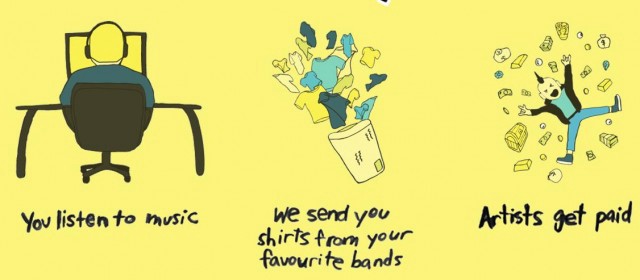Rocks Old
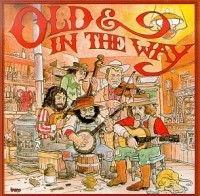
“Before we go any further, a quick run-through of the humbling timeline of Earth’s salad days. Our planet forms 4.5 billion years ago. It’s all bubbly, molten and hot. And just as it starts to cool down 4.4 billion years ago, wham, it’s hit with something big, really big. The impact remelts most of the Earth and the debris from this crash, well, there’s our moon. Shortly thereafter the moon-forming impact, say in the 100–150 million year window, the Earth cools down again, an ocean forms, and O’Neil’s rocks were created, pink speckles and all. At 4.3 billion years of age, O’Neil’s brown basalt ousts the previous contender, the 4.03 billion year old Acasta gneiss formation in Canada’s Northwest Territories, from the ‘Earth’s Oldest Rock’ spotlight.”
— The Last Word On Nothing’s Anne Casselman writes about geologist Jonathan O’Neil’s controversial claim to have discovered the the world’s oldest rock in Quebec’s Nuvvuagittuq greenstone belt. Nuvvuagittuq spelled backwards is “Quttigauvvan.” Tangentially related: Scientists have pinpointed the source of the huge slabs of bluestone used to make Stonehenge to within 230 feet of an outcropping near the town of Pont Saeson in Western Wales. Now they just have to determine what kind of alien tractor beam or druidic magick transported the four-ton rocks the 240 miles to their spot outside Salisbury 2,500 years ago.
Blogger Just Pretending To Be Hate-Filled Monster
Blogger Just Pretending To Be Hate-Filled Monster
Hamilton Nolan looooooves D.C.
The Condition: The Eye That Never Blinks
The Condition: The Eye That Never Blinks
by Blake Butler
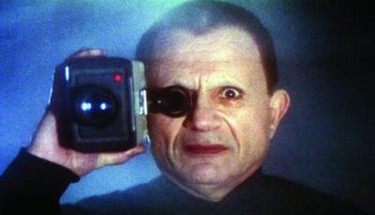
I’m on the internet again. This is how I begin most days, any day, immediately upon waking pulling the machine against my body. I often sleep with the laptop on the bed beside me waiting, as well the last thing I touched before I stopped and tried to begin drifting off. The strobing eye of my MacBook Pro must be covered so as not to wink and wink its light against my face and keep me up.
I don’t even know what I want to look at most days ending and beginning the day in this way. The first and last things are almost always the same sites. Gmail, Facebook, Twitter, Google Reader, turned to in small rotation in between whatever else I try to do. Waking up begins with wading with what has accumulated in feed at each of these electronic locations while I’ve been unconscious however long. Sometimes while I’m dreaming I seem them there too, reading or writing emails to people who may or may not exist inside that fold, status updates culled out of my head and slipped into me the same way they do when I’m awake, though drummed from somewhere in me instead of someone else. Maybe.
The general feeling pervading all these hours of constant silent prodding folds up in everything we do. Each object bathes in the light around it, never quite asleep or all awake. When at rest, the body remains open; while ambulatory, it seems hard to stick to anything for long. I’ve never been able to shake the scene in David Lynch’s Lost Highway where Bill Pullman’s character meets Robert Blake’s character (credited only as “The Mystery Man”) at a party, saying “We’ve met before, haven’t we? At your house, don’t you remember? Of course. As a matter of fact, I’m there right now. At your house. Call me. Dial your number. Go ahead.” Of course, Fred does, dialing a number that we are not given but seems to clearly end in 666, and at the far end the “Mystery Man” (or an instance of him) answers, indeed inside his house, saying, “I told you I was here.”
It seems important that at no point in the movie do we see Robert Blake, in his puffed body, blink. He is always staring, always seeing. He is in many rooms at once. He films Bill Pullman and his soon-to-be-murdered wife while they are sleeping, the act of which will later cause Pullman’s character to become someone wholly else, his identity shapeshifted and taken up to be carried by another actor. Something is always there: a conduit for skewing and erasure, resulting, soon, in the shifting of the inhabitant’s identity, skin, and mind. “In the East, the Far East,” Robert Blake’s person tells Bill Pullman’s character (now embodied by Balthazar Getty) over another phone, “when a person is sentenced to death, they’re sent to a place where they can’t escape, never knowing when an executioner may step up behind them and fire a bullet into the back of their head.”
It seems like it’s gotten harder to talk to people or even be around them sometimes in this dual folding of how the set of waking hours begins and ends. Often at dinner or a bar with friends I’ve newly met or known for fifteen years it’ll end up being all of us sitting around the table on the smaller machine always on our person, whatever brand of phone. We are updating the status about where we are now and with who or for how long and what we mean to do, uploading photos of ourselves sitting there or what we’re about to eat, as if there’s anything anyone could do outside the room in response to that beyond saying, mmm. Or we’re looking at the mobile versions of the same sites again to see again if anything is new again and though it is, because there’s always new there, there isn’t, because it’s hardly ever something you’ll remember beyond the look. The feed exists to feed, and so you eat.
You could say anything to people staring into their machines in this way and they respond often with the same grunt: I hear you making words and I am here too but I don’t know. Because there’s so much more to hear and see you hear and see it less, then it is buried. All words are in the wake of other words. All images are in the mental fat with the others and the skin is getting large. It seems like there is air to walk around in between buildings and people and the woods or whatever else though what isn’t there almost seems there. The machines seem to be breathing.
This is not to say the object by its own nature demands participation. Brian Eno’s Music For Airports, when actually played aloud as sound installation in Stansted Airport in the UK, elicited almost no commotion among travelers beyond occasional brief curiosity: still strung up in forward motion, moving on. “Soothed but suspect,” read the liner notes to the Flaming Lips’s eight-song album Zaireeeka, where to hear each song in full you must play all four discs at once, allowing into the experience of the music both acts of error or intentional manipulation (such as messing up the timing of starting all the discs together at the same time, or choosing to play only two of the discs, so on). “In a state of suspended anticipation. The listener could hear an exaggerated dimension of sound where sometimes reverb comes before a sound occurs, other times it’s delayed… Where a melody that’s pleasant and uplifting, upon being slightly shifted, becomes dissonant and interruptive… Where crescendos miss their cues either late or early or both… making music that purposely destroys its own momentum…” Indeed, the listening experience of Zaireeka contains some sense of strobing, of rooms growing or shrinking in size, of containment and the contained. In this same creation spirit, one might think of Captain Beefheart recording layers for his records with headphones off so as to not know for certain how the tracking lined up in the arrangement. I don’t need to go at length about John Cage’s 4’33”, for sure, wherein the composition is not the composition but the air on, in and around the scent of which it sits. Even more apt might be his ORGAN2/ASLSP As Slow aS Possible, which is currently being performed as the longest piece of music ever, over a period of 639 years in the church of St. Burchardi in Halberstadt, Germany, wherein no living person will hear the both the beginning and the end, except perhaps generationally, except the organ, and the air.
Behind all of this endless thinking, the circling of a mind that can not disregard itself, there must be a running bead, fueled by various somethings, that weighs heavy on the waking state. Because most likely, for the majority of people, it is not simply the brain itself that creates these encampments. There is something behind them. There is a pulse: an obsession, or series of obsessions, that sits at the center of a consciousness that can’t turn off, if at times a definitive factor to such things as lost sleep.
ob⋅ses⋅sion [uhb-sesh–uhn] noun
1. the domination of one’s thoughts or feelings by a
persistent idea, image, desire, etc.
2. the idea, image, desire, feeling, etc., itself.
3. the state of being obsessed.
4. the act of obsessing.
Origin:
1505–15; < L obsessiōn– (s. of obsessiō) blockade, siege, equiv. to obsess(us)
Here the name at once invokes the state, the act, and the object of the act all at the same time, as if the obsessor and the obsessee are not mututally exclusive, but a duality contained in one mode, wrought from the same stripe. Obsession has also been used as a title or a brand name for books, films, a TV series, a band, a record label, albums, songs, board games, video games, a pornstar, a telescope, and a perfume. Even the transcribed lyrics to Mariah Carey’s single “Obsessed” seem to, probably accidentally, exhibit some of the bizarre weight of the state’s encampment:
“I was like, why are you so obsessed with me?
So oh, oh, oh, oh, so oh, oh oh, oh
So oh, oh, oh, oh, so oh, oh oh, oh
So oh, oh, oh, oh, so oh, oh oh, oh
So oh, oh, oh, oh, so oh, oh oh, oh
All those holes as little portals, mouths to slinking tubes shaped like the S’s, the h’s little rooms where one might stop and lay or turn around. Carried as well are the groundpoints of what might separate obsession from mere fascination: routine and repetition, semi-inexplicable expanse, a guttural want, nonsensical or nameless, some simultaneous founding in the exquisite and the mundane. It would seem then that the objects or cues at the center of these obsessions — however they manifest themselves in the individuals, and to what degree — must be significantly responsible for occupying some disruption of the clean working of the brain — helping common thoughtflow from one of simple input/output and into ways of mania would require an inordinate kind of aura — an attraction wrought in the sublime, somewhere between the wanting and the having, the skin of something unnameable in frame.
It seems too late for any of this to be stopped. Even making aimed attempts to avoid these machinations and the silent spread seems bent against a thing that continues with or without you to be growing in no glow. If we promise not to look online in front of others, we’re waiting for the moment the other becomes consumed. If I put the computer on the far side of my apartment so as to let it know we won’t be sharing the sheets together tonight I can see the light of its eye still there winking, even if I cover the light with a book or make it face the wall. And in the book are words and through the wall are all the other people.
Previously: Existential Googling, Personality Seepage
Blake Butler’s most recent book is Nothing: A Portrait of Insomnia. He lives in Atlanta and edits HTMLGIANT .
John Daly, "Knockin' On Heaven's Door"
https://www.youtube.com/watch?v=BLmmi59IUEY
Here is a video of golfer John Daly wearing white pants and an American flag sports coat and performing Bob Dylan’s “Knockin’ On Heaven’s Door” in Thailand. [Via]
Drunk Man Disliked Women
“His drinking was not something to admire, and it was not a charming foible. Maybe sometimes it made him warm and expansive, but I never saw that side of it. What I saw was that drinking made him angry and combative and bullying, often toward people who were way out of his league — elderly guests on the Nation cruise, interns (especially female interns). Drinking didn’t make him a better writer either — that’s another myth. Christopher was such a practiced hand, with a style that was so patented, so integrally an expression of his personality, he was so sure he was right about whatever the subject, he could meet his deadlines even when he was totally sozzled. But those passages of pointless linguistic pirouetting? The arguments that don’t track if you look beneath the bravura phrasing? Forgive the cliche: That was the booze talking.”
— Katha Pollitt eulogizes Christopher Hitchens.
Free The Network
Free The Network
by Allison Bland
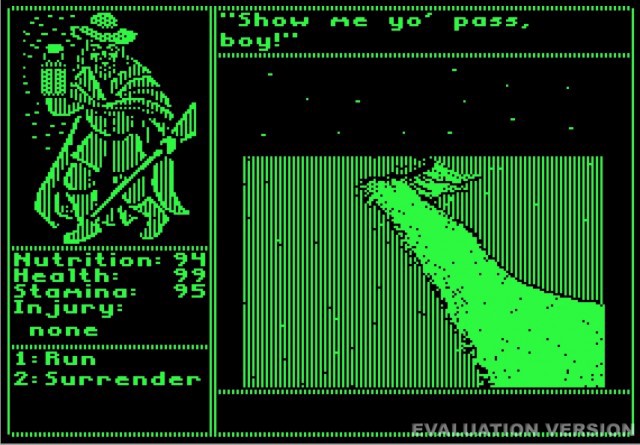
Maybe what I am about to say will come as a surprise to some. But it’s something I’ve known about myself for years.
I have a hard time networking with white guys. And I think they have a hard time networking with me, too.
I’m not saying I don’t have any white male friends — I do. But within my social network, the ratio of white men to any other group is disproportionately small.
I’m so bad at networking with white guys that even the most serendipitous circumstances are foiled. I once had an interview with a Boston-based founder of a certain “game layer on top of the world.” I learned that the startup had recently been asked to create a geo-located adventure to teach about the Underground Railroad. I thought, cool, I know a lot about the Underground Railroad and I know a lot about educational computer games. Just months earlier, I’d assisted with a PC game project funded by the NEH that tracked the journey of fugitive slaves from Virginia to Massachusetts. For research, I played and compiled a report about every game ever created about the Underground Railroad. The most interesting was the 1993 release Freedom!, by MECC, creators of The Oregon Trail. The game was hard to track down, and hard to win. When the overseer’s green face appeared on the black screen with the words “CAPTURED” it was game over and you were back in green chains. The game had some problems. I felt I had the answers that would make a new game better.
I could not believe this marvelous act of fate. After the interview, I told everyone about it. I was sure I’d get a call back.
Then I waited — and waited.
Deep down, I knew the meeting had been awkward. I’d felt uncomfortable just walking through the mid-sized office; looking around, I noticed absolutely no black, Asian or Latino people worked there. I wasn’t entirely surprised when I didn’t get a call back.
I’m not the only one sitting by the phone. As far as I can tell, very few black women work at tech startups, or at super social networking companies like Facebook or Twitter, despite our strong participation in the social-media sphere And ever since Web 1.0, the social web has mirrored the qualities, quirks and culture of the few — mainly white, mainly male — programmers who’ve developed it.
Soledad O’Brien’s latest installment in the series “Black in America” recently dubbed Silicon Valley as “The New Promised Land.” So I’ve often had to wonder: how do you negotiate access to this land? Do you have to slip in under the cover of night? Can my Android or iPhone stand in the place of walking papers?
Eventually, I got a tech-related job in Boston. I spent a couple years working for different community-based technology nonprofits in the area. I regularly crossed the Charles to attend events in Cambridge at the MIT Media Lab and Harvard. There are very cool things happening there, but the disparities in access by neighborhood were astounding to observe. A few months ago I moved back home to Virginia.
Almost as soon as I returned to the area, The Atlantic began an online series about technology startups in the South. I followed the stories with great interest. The feature highlighted innovative hotspots from Nashville, Tennessee to Shreveport, Louisiana. Great things are happening across the South.
Inspired by this energy, I began tossing a couple of ideas around in my head. My mom told me they were good ideas. I decided to sign-up to pitch at a 48-hour startup competition in southeastern Virginia that I’d read about on Facebook.
I was excited yet nervous to pitch.
***
My nervousness sprang in part from communication problems I’d noticed online. Any casual web user knows that comments sections of blogs have been terrible for a long time. Yet it’s taken years for developers to streamline solutions. This delayed movement may point to underlying issues about contesting space in the tech community. My takeaway: if you want to change something related to development, don’t expect the guys behind the scenes to read your mind, and be prepared to write a lot of support tickets.
For the past couple years I’d been working in out-of-school time programs committed to empowering youth through technology. I’d flag any stories on the tech-industry blogs that involved people of color or dealt with issues of diversity, thinking that that stories might be inspiring to share with the students I worked with. But the comments sections of these stories were plagued with nasty, insensitive remarks and jokes. Coming across them made me feel as if I’d walked into a room where I didn’t belong — and where no one expected me.
I liken this feeling to walking down a street and having a derogatory comment hurled at you. It’ll ruin your day. But a friend may walk down the same street, without encountering a similar incident. In fact, you could walk down that same street every day for the rest of your life and never have that experience again. It might have just been one crazy day. But when you walk down that street again that incident will always be in your mind.
If I read an article online and come across a nasty comment, it feels aimed directly at me. When I share the link with someone I care about, I transfer that feeling onto him or her: “You don’t belong here.” And when I look up that story a year later and see the comment again, I am forced to encounter that feeling all over again. This is a problem that a team of diverse engineers could have potentially anticipated and approached with a solid solution for civilized comment exchange.
As it is, almost every reputable news site and major blog is now trying to play catch up and implement its own better solution for comment moderation. A reevaluation is needed. Threaded comments evolved from the social needs predicated by the 1980s development style; it was how small groups of programmers would communicate on shared projects. When the web grew this system was simply scaled out. But divorced from its actual context and applied on a massive anonymous scale, this de facto implementation turns up a lot of problems.
Media theorist Jaron Lanier describes this type of shortcoming as a result of relying on “locked-in” technologies. It’s one example of the ill effects of scaling Web 1.0 philosophy to an entire global community, one that took no part in its creation. As time went on, instead of broadening the base, Web 2.0 just added on new stuff horizontally and vertically, like a precarious, wobbly LEGO construction.
Consequently, my worry about pitching my idea came from feeling that these predominantly white American male, technology communities exist in an environment built around making things fit in locked-in patterns. Whether that locked-in logic continues to serve us well today is what’s up for debate.
***
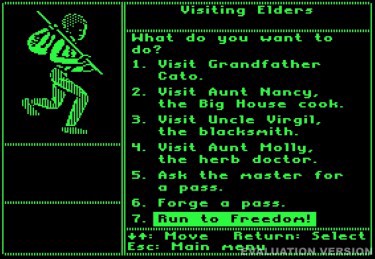
The Startup Weekend was held in my hometown. Attending the event sort of felt like when you were in high school and on the Model UN team and sequestered at the local Marriott all weekend. The same excitement; same feeling of spending forever in one room. Also, as with a Model UN, the folks convened did not necessarily know each other, yet together we were endeavoring to solve social, political and economic problems.
My pitch could be summed up as “fair wages for digital trade.” From my experience working in community technology centers, I’d noticed a lot of requests coming in that asked young people to perform free web-based work. These tasks were entry-level stuff; they ranged from altering images in Photoshop, to making an update or two to an existing website, to creating a slideshow of last year’s vacation, and other like chores that fall short of a professional’s pay grade. They were mostly things you could do yourself, like washing your car or mowing your lawn. You could do it — or you could pay the neighbor’s kid to do it.
Most people have few qualms about asking a young person to do this sort of unpaid work. They figure kids are online all the time anyway (and are therefore maybe just innately better at technology). Even more fundamentally, the expectation to get something for nothing is built into the very fiber of the web. It’s another ingrained Web 1.0 technique that hasn’t scaled well.
The early architects of the web were so excited about the possibility of the Internet that they dedicated untold hours of free labor just to see it up and running as quickly as possible. For the most part, this model assumes that you, the creative but unpaid laborer, have some private resources on which to draw while you do the work you love; in other words, it assumes some privilege and comfort. The kids I worked with didn’t have such resources; they couldn’t afford to give away their expertise for free.
My idea: a marketplace where students can earn money for performing digital tasks and where they can also pick up some new skills. If all goes well, perhaps these same kids will pursue a tech career and one day earn the professional salary that goes with it. The idea isn’t groundbreaking, but there isn’t a widely used solution yet out there.
My 60-second pitch went well. Out of 37 entrepreneurs who presented, my idea was one of eight selected to move forward with the 48-hour build. Of the eight, I was the only woman selected and the only person of color (there were three woman and six African-American guys who pitched). Everyone registered for the Startup Weekend (entrepreneurs, designers and developers) now had to join one of the eight teams. My team maxed out almost immediately. All white guys.
We moved to a large open room that resembled a warehouse. With plenty of ergonomic seating on deck, and two kegs of craft beer on tap, creative ideas flowed freely. The dress code was relaxed. I imagined the atmosphere to be something like the super fraternity house of the future. I even learned a new term: “brogrammer.”
We worked the entire weekend to develop my basic idea into a more complex product. It felt difficult at times; there was competition within the group, and there were moments of utter discouragement. But overall I was impressed by the progress we made. Greater social good was at the heart of our work, and we had challenging and mentally draining discussions about how to advance our goals. We identified unemployment and career preparedness among 16–24 year-olds as our key problem, hoping to serve young people from underrepresented communities in particular. By the end of the weekend I’d say we were downright giddy. I’m sure we will stay in touch.
Still, there were moments throughout the weekend that felt uncomfortable. Jokes that were a little off the mark that made me squirm in my seat a bit. I noticed the same slight unease among other black people present. The four black guys who stayed told me they were called each other’s names all weekend. The only other black woman present, a graphic designer, told me that she had been congratulated on her (that is my) pitch. Her tone was nonchalant. Once I bristled when a white male explained a technical concept to me in the language of basketball, because I was “so tall.” I watched as he, realizing he should have chosen his words better, bristled with his own embarrassment. Our discomfort was completely mutual. It’s not that I felt any of the white male participants had malicious intent, but I did get the distinct impression that all sorts of other comments would have flown, easily and without a second thought, if a person of color, has not been present.
Often the discomfort of these situations stems more from what’s unspoken than what’s said. For example, at the event was a group of university students who, just a few days earlier, had had their startup profiled in the local paper. The young men, who were black, arrived at the conference in freshly starched white dress shirts and ties. The white developers were all in jeans and t-shirts. One of the developers knew one of the guys; he said, “Dude, why are you wearing a suit?” But otherwise there was no way to joke about and diffuse whatever (unspoken) tension had walked in the room with those suits. The young men didn’t advance to the top eight, and while some local BBQ places had donated dinner, they didn’t stick around to eat and mingle either.
Feeling comfortable enough to sit at the table is a real challenge.
At a different point in the weekend, another entrepreneur, also black, introduced himself to the judges as an implementation manager. A judge repeated, “Did you just say you were an intimidation manager?” Of course he hadn’t, but the guy flexed his muscles and grinned sheepishly anyway. Tension circled the room.
A black programmer named Clynton told me that while diversity seemed to be valued in theory among entrepreneurs, whenever he approached VCs with a concept, they always seemed to be going in a different direction with projects, or not currently funding, or otherwise giving him the cold shoulder. (I think his idea — an interface from which users can order crowd-sourced feedback before purchasing stocks, to the benefit of all parties — is great; his pitch: “If you have extra time, you probably wish you had extra money. If you have extra money, you probably wish you had extra time.”)
Then there was the persistent refrain from the event’s organizer: “Should we rap now?” that seemed to always come before, during or after someone of color spoke.
***
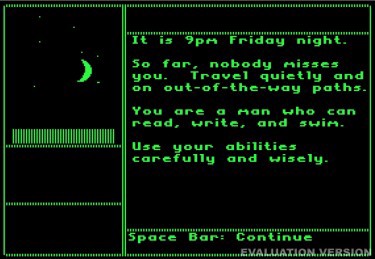
I listened to a story on NPR recently about biotechnology. The show pondered genetic modification and the possibility of introducing completely new advantageous traits into humanity through this process. The total number of biotechnologists involved in this field is tiny. This was shocking to the interviewer: No group this small could possibly appropriately anticipate the repercussions, the uses and misuses, of such engineering in our vast world.
The information technology being developed by today’s startups have significant ramifications towards social engineering, too. A diverse audience needs to be considered. Think about how many times actual usage patterns of social media have been completely off-target: How many of your Facebook friends still show what songs they are listening on Spotify? How long did Google Latitude last in your friend group? What is Color?
The energy that goes into these tools and services should be doing more for more people:
• When I try to locate services using Foursquare in a predominantly African-American neighborhood, I am frequently guided miles out of the area, even though community-owned businesses exist right in front of me. How can we put these institutions on the map?
• Facebook helps me understand the profiles of the people in my community, but it doesn’t help me to understand the profile of the community itself. If Facebook can calculate what we “like” in the community, couldn’t it also help us understand what we “need” in a community? This could stimulate small business and franchise growth.
• I wonder if Twitter can put the potential of digital organizing to the test next November. Malcolm Gladwell and Clay Shirky could finally settle the score. Black women are the most represented group on Twitter. Black women had the highest voter turnout rate in November 2008. This seems like a great opportunity to show a definitive correlation between social media and civic action.
• And just look at the shifting demographics of the United States. It’d be amazing if Google would help us conduct searches for US-based news and services entirely in Spanish, and also in combinations that use some Spanish, some English. When I use my phone to Google, “¿Dónde puedo votar in San Francisco November,” I don’t come up with a list of helpful locations. But a complete list of polling locations is the first hit when I ask for it in English.
If these issues were of greater importance to most founders, then the work would be done already.
***
I chose my alma mater, Wellesley College, for a number of reasons. Since I’m interested in technology, it was nice to have the opportunity to take a few classes at our brother school, the Massachusetts Institute of Technology. However, it was the idea of one day joining a fantastic network of alumnae that tipped my decision.
Because I went to a women’s college, I don’t ever have that awful feeling that the guys I went to school with are colluding with fellow classmates in some Old Boys Club alumni network. On the other hand, I didn’t gain the experience of networking with white guys in competitive situations until later than most. Luckily, the rigorous atmosphere thickened my skin and helped me gain resilience and excellent communication skills (so now I actually don’t think I’m so bad at networking with white guys — I just have my quirks). I got used to presenting my ideas and taking leaps. I met women from all around the world who have great ideas and innovative ways to contribute. In my home state of Virginia and throughout the South, historically black colleges and universities help African-American students to have a similar experience.
Atmospheres like these can be instrumental in becoming self-assured and confident — both key factors in presenting yourself well in networking situations. They also project to local communities and the world that: knowledge is being cultivated here, too. Most women and underrepresented minorities don’t get to experience being in a community where we feel comfortable to experiment in exciting, but nerve-wracking opportunities. We may feel we cannot afford to take risks. Often, without the benefit of savings, loans or venture capital, we literally cannot afford to fail.
With so much work to do, I’m happy that incubators like the NewME accelerator are starting to pop up in the Valley and in other places. These incubators give startups founded or co-founded by underrepresented minorities and women the opportunity to get established in a supportive environment. If your startup fits the bill and you have a working prototype, you might want to consider applying for NewME’s 12-week residential program. The second cycle begins in mid-February, with another cycle beginning next summer.
If more programs like this can gain traction, the tech industry is going to start looking very different. And that’s great — more than ever, it’s important that women and people of color start making waves in Silicon Valley and other tech corridors. It’s going to take some different and honest critical perspectives to ensure the future health and relevance of these industries.
Because of the relatively diverse makeup of the southeastern Virginia region — and with the prominence of HBCU’s in the area — enough factors converged in my favor that I didn’t feel like a token when I advanced at the Startup Weekend. I noticed my own comfort; but did the white guys in attendance entertain similar thoughts and feelings? Would they have noticed if the top eight included zero ideas led by women or people of color?
On the last evening of the event, a black developer, whose concept was not moved forward, told me he was happy that my idea got selected. “One of us had to get chosen,” he said.
You can follow Allison Bland on the Undergr- uh, Twitter, @alliebland.
Wall-Rubber Lacks Mirth
“Mariah Carey in a pornographic Father Christmas costume rubbing herself up against a wall without laughing — says it all really.”
Today Is A Good Day To Listen To Etta James Sing
https://www.youtube.com/watch?v=dc_iqhwE0CQ
Sad news this weekend that Etta James is dying of leukemia. Hers is one of the greatest voices for the singing of rock n’ roll, if not the the greatest voice for the singing of rock n’ roll, that anyone has ever heard. As evidenced by the above, February, 1966 performance from the TV show “The! Beat!” She goes first and last.

